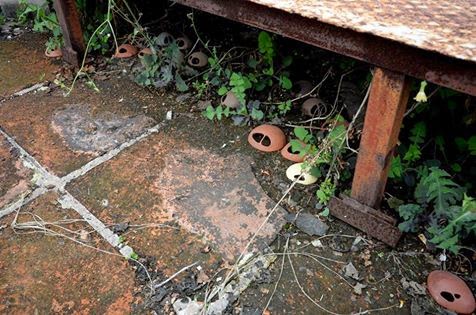On Monday 8th June, 2015 I caught a train on the new
Marmary section of the local Mass Transit Railway from Serkeci under the Bosphorus to the Asian side of Istanbul. From the station at Kadikoy (close to the ferry pier) it was a short walk through the local streets to the Nazim Hikmet Cultural Centre (established in an old renovated Armenian School) where I attended the CONTEMPART '15 Contemporary Art Conference.
This modest Cultural Centre became the focus of a series of presentations by artists, researchers and creators from around the world. I found myself in the midst of participants from Australia, Canada, South Africa, China, Mexico, Columbia, Portugal, Singapore, Germany, Taiwan, the UK and of course I traveled from Hong Kong.
The range of session focuses was wide: Architecture and Contemporary Arts, Art and Technology, Cinematographic Arts and Identity, Place Medium and Art, Ways of Artistic Production, Urban Space and Contemporary Arts, Performance and Contemporary Art - we pretty much covered everything!
I chaired one of the first parallel sessions and enjoyed stimulating presentations by Jorge Lopera of EAFIT University in Columbia, Mengbi Li of the University of New South Wales in Australia, Jennifer Lade of RMIT, Melbourne, Australia and Antonio Gorgel Pinto of Portugal.
Following a nice lunch we began the afternoon sessions and at around 3:30pm it was my turn to present. I related my experience constructing a performance piece and included descriptions of references, methods, theories, research and the practical experience of realising the performance in the hot summer of Hong Kong. I believe my work was well received despite not being as academic as some others and I subsequently held thought provoking discussions with other participants about performance and experience.
Also presenting in my session were Izabela Pluta of the University of New South Wales Art and Design, Sydney, Australia, and Lenka Novakova of Concordia University, Canada.
In the earlier afternoon session I had listened to the presentation of Peter Burke of RMIT, Melbourne, Australia who gave a very interesting summary of his practice and I was very impressed with his energy and creative passion for participatory art.
There were two keynote presentations, Lawrence M. Kaye talked about 'Art Law and Contemporary Issues', relating interesting stories of law suits involving artists and works of art, and Ludovic Bernhardt - a French artist living and working in Istanbul who introduced his work and experiences being an artist in this city.
The day passed incredibly quickly and the following day I joined a walking tour of the city during which we visitied the Hippodrome, Hagia Sophia, The Blue Mosque, The Grand Bazaar and the Hagia Irene Church outside the city walls.
I must thank Hande Dirim and everyone else who helped organise the conference and I wish them well for the future. The question that popped into my head on the flight home was 'Will I return next year?'...I'm very tempted!
Nazim Hikmet Cultural Centre
Cultural Centre Interior
Cultural Centre Outdoor Dining Terrace
Galata Tower
Hagia Sophia
Hagia Sophia Interior
After the conference with Peter Burke and Jennifer Lade























































